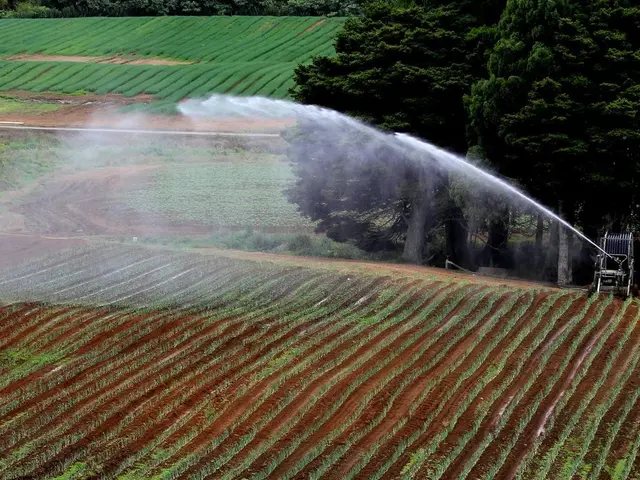Underground Mycorrhizal Networks: The Secret Language of Trees Revealed through Plant Communication
In the unseen world beneath our feet, a vast and intricate network of mycorrhizal fungi is weaving together the roots of trees, shrubs, and other plants, creating an extensive underground web of interdependence[1]. This hidden network, often referred to as the Wood Wide Web, functions like a biological internet for the exchange of resources and signals, profoundly impacting forest health and ecology[1][4].
Mycorrhizal fungi are the unsung heroes of forest ecosystems, benefiting both plants and fungi. Plants gain improved access to water and minerals, while fungi receive sugars produced by photosynthesis[2]. Trees can even transmit warning signals, such as when under attack by pests[1].
The key functions and impacts of this network are diverse and far-reaching. Nutrient exchange is a fundamental aspect, with trees in favorable conditions transferring excess sugars and nutrients to shaded or weaker neighbors through the fungal network, improving communal resilience[1][4]. For example, Douglas firs allocate more carbon to their offspring than unrelated seedlings, a form of parental care mediated by the fungi[1].
Chemical signaling is another crucial role played by mycorrhizal fungi. When a tree is attacked by herbivores or pathogens, it releases chemical signals through the network that alert nearby trees, enabling them to activate defense mechanisms preemptively[1][2].
Enhanced seedling growth and survival are also attributed to the mycorrhizal network. Seedlings linked to the network receive vital nutrients and signals from mature trees, increasing their growth and likelihood of survival[1].
Mycorrhizal fungi are also believed to extend the cognitive and sensing capabilities of plants, linking roots and facilitating the transfer of hormonal, electrical, or chemical signals, allowing plants to perceive and respond to the presence and stress of neighbors below ground[2].
The type and distribution of mycorrhizal fungi influence which tree species thrive under varying climatic and geographical conditions, thus shaping forest diversity and resilience to stress such as climate change[3]. The fungi act as brokers, redistributing nutrients from dominant to weaker trees to maintain balance, but some fungi can also act selfishly by siphoning nutrients without reciprocation, mirroring complex ecological relationships akin to human social dynamics[1].
In summary, mycorrhizal fungi create an extensive underground network that enables trees to share nutrients, communicate warnings, support kin, and adapt collectively to environmental challenges, making forest ecosystems more interconnected and resilient[1][2][3][4].
It is important to note that there are several main types of mycorrhiza, including ectomycorrhiza and endomycorrhiza (arbuscular). Studies in Canadian forests have shown that a single mycorrhizal network may span hundreds of trees and shrubs[5].
Without mycorrhiza, most plants simply would not survive. The hyphae of a single fungal individual can connect dozens, or even hundreds, of plants of various species, forming a continuous underground network[1]. Mycorrhizal associations are present in over 90% of land plant species[6].
Through microscopic fungal threads known as hyphae, vast underground networks are formed, connecting trees, shrubs, and other plants in a complex web of interdependence. This interconnectedness is not limited to individuals of the same species; mycorrhizal hyphae can connect plants of different species as well[1].
Intriguingly, some studies suggest that plants can recognize their "relatives" and adjust their communication accordingly[7]. The mycelium of the largest fungi, such as Armillaria ostoyae, can cover over 9 square kilometres and be more than 2,000 years old[8].
In conclusion, the mycorrhizal network is a vital component of forest ecosystems, facilitating nutrient exchange, chemical signaling, and enhancing seedling growth and survival. This network not only shapes forest diversity and resilience but also mirrors complex ecological relationships akin to human social dynamics. Nearly every forest on Earth is, in reality, a connected, interdependent web of organisms.
- The mycorrhizal network, due to its role in facilitating nutrient exchange and chemical signaling, also extends to the realm of environmental science, significantly impacting forest health and ecology.
- In the realm of technology, mycorrhizal fungi can be considered as a natural extensible network, linking plants of different species together through microscopic hyphae, forming a continuous underground network.




